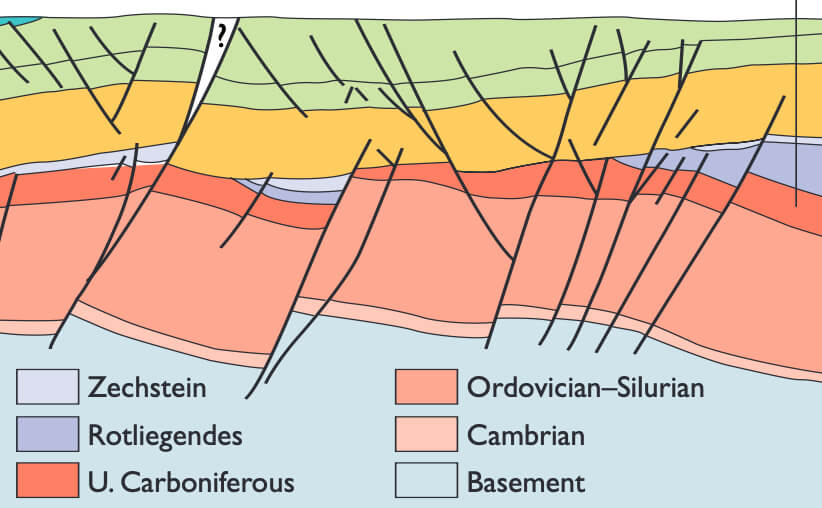
How to Cite
Share
Abstract
The continental to marine Upper Triassic – Jurassic succession of the Danish Basin and the Fennoscandian Border Zone is interpreted within a sequence stratigraphic framework, and the evolution of the depositional basin is discussed. The intracratonic Permian–Cenozoic Danish Basin was formed by Late Carboniferous – Early Permian crustal extension followed by subsidence governed primarily by thermal cooling and local faulting. The basin is separated from the stable Precambrian Baltic Shield by the Fennoscandian Border Zone, and is bounded by basement blocks of the Ringkøbing–Fyn High towards the south. In Late Triassic – Jurassic times, the basin was part of the epeiric shallow sea that covered most of northern Europe. The Upper Triassic – Jurassic basin-fill is subdivided into two tectono-stratigraphic units by a basinwide intra-Aalenian unconformity. The Norian – Lower Aalenian succession was formed under relative tectonic tranquillity and shows an overall layer-cake geometry, except for areas with local faults and salt movements. Deposition was initiated by a Norian transgression that led to shallow marine deposition and was accompanied by a gradual climatic change to more humid conditions. Extensive sheets of shoreface sand and associated paralic sediments were deposited during short-lived forced regressions in Rhaetian time. A stepwise deepening and development of fully marine conditions followed in the Hettangian – Early Sinemurian. Thick uniform basinwide mud blankets were deposited on an open storm-influenced shelf, while sand was trapped at the basin margins. This depositional pattern continued until Late Toarcian – Early Aalenian times when the basin became restricted due to renewed uplift of the Ringkøbing–Fyn High. In Middle Aalenian – Bathonian times, the former basin area was subjected to deep erosion, and deposition became restricted to the fault-bounded Sorgenfrei–Tornquist Zone. Eventually the fault margins were overstepped, and paralic–marine deposition gradually resumed in most of the basin in Late Jurassic time. Thus, the facies architecture of the Norian – Lower Aalenian succession reflects eustatic or large-scale regional sea-level changes, whereas the Middle Aalenian – Volgian succession reflects a strong tectonic control that gradually gave way to more widespread and sea-level controlled sedimentation. The uplift of the Ringkøbing–Fyn High and most of the Danish Basin occurred concurrently with the uplift of the North Sea and a wide irregular uplifted area was formed, which differs significantly from the postulated domal pattern.
How to Cite
Share
Downloads
Editors: Jon R. Ineson and Finn Surlyk
The Jurassic rocks of Denmark and East Greenland record the evolution of two discrete portions of the Mesozoic rift complex, now separated by the North Atlantic Ocean. The Jurassic of Denmark and adjacent areas occurs mostly in the subsurface and research has thus focussed [...]










